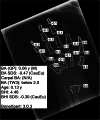Current and emerging artificial intelligence applications for pediatric musculoskeletal radiology
- PMID: 34272573
- PMCID: PMC9537230
- DOI: 10.1007/s00247-021-05130-8
Current and emerging artificial intelligence applications for pediatric musculoskeletal radiology
Abstract
Artificial intelligence (AI) is playing an ever-increasing role in radiology (more so in the adult world than in pediatrics), to the extent that there are unfounded fears it will completely take over the role of the radiologist. In relation to musculoskeletal applications of AI in pediatric radiology, we are far from the time when AI will replace radiologists; even for the commonest application (bone age assessment), AI is more often employed in an AI-assist mode rather than an AI-replace or AI-extend mode. AI for bone age assessment has been in clinical use for more than a decade and is the area in which most research has been conducted. Most other potential indications in children (such as appendicular and vertebral fracture detection) remain largely in the research domain. This article reviews the areas in which AI is most prominent in relation to the pediatric musculoskeletal system, briefly summarizing the current literature and highlighting areas for future research. Pediatric radiologists are encouraged to participate as members of the research teams conducting pediatric radiology artificial intelligence research.
Keywords: Artificial intelligence; Bone; Children; Musculoskeletal; Pediatric radiology.
© 2021. The Author(s).
Conflict of interest statement
Professor Offiah has conducted research with Visiana in relation to BoneXpert software and has received funding for the development of dREAMS.
Figures



References
-
- van Ginneken B (2018) AI and radiologists — a painful divorce? ECR 2018 presentation. https://vimeo.com/258232453. Accessed 12 Mar 2021
-
- No authors (n.d.) AI for radiology: an implementation guide. Products. Website. https://grand-challenge.org/aiforradiology/. Accessed 10 Mar 2021
-
- Koska IO. Applications of deep learning in radiology and pediatric radiology. Pediatr Radiol. 2019;49:247–317.

